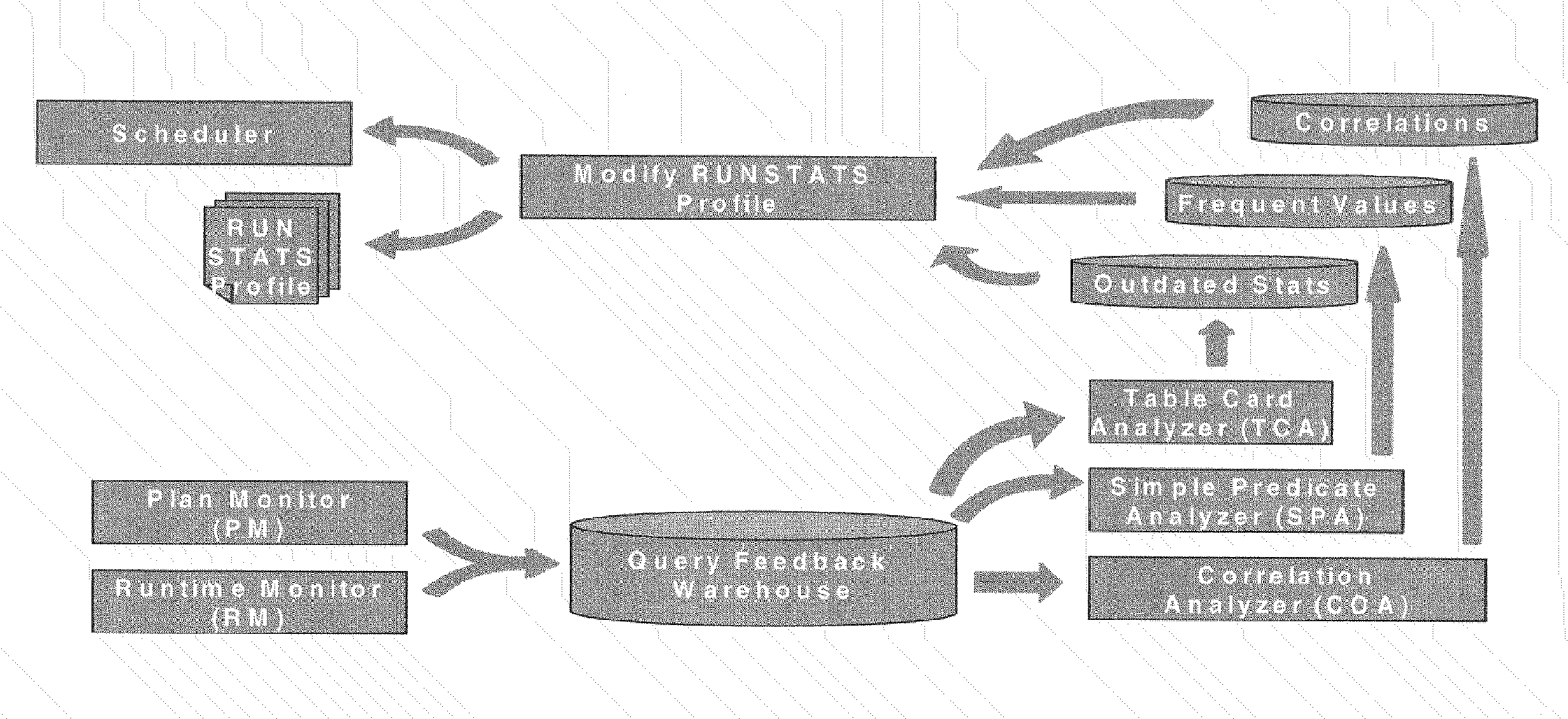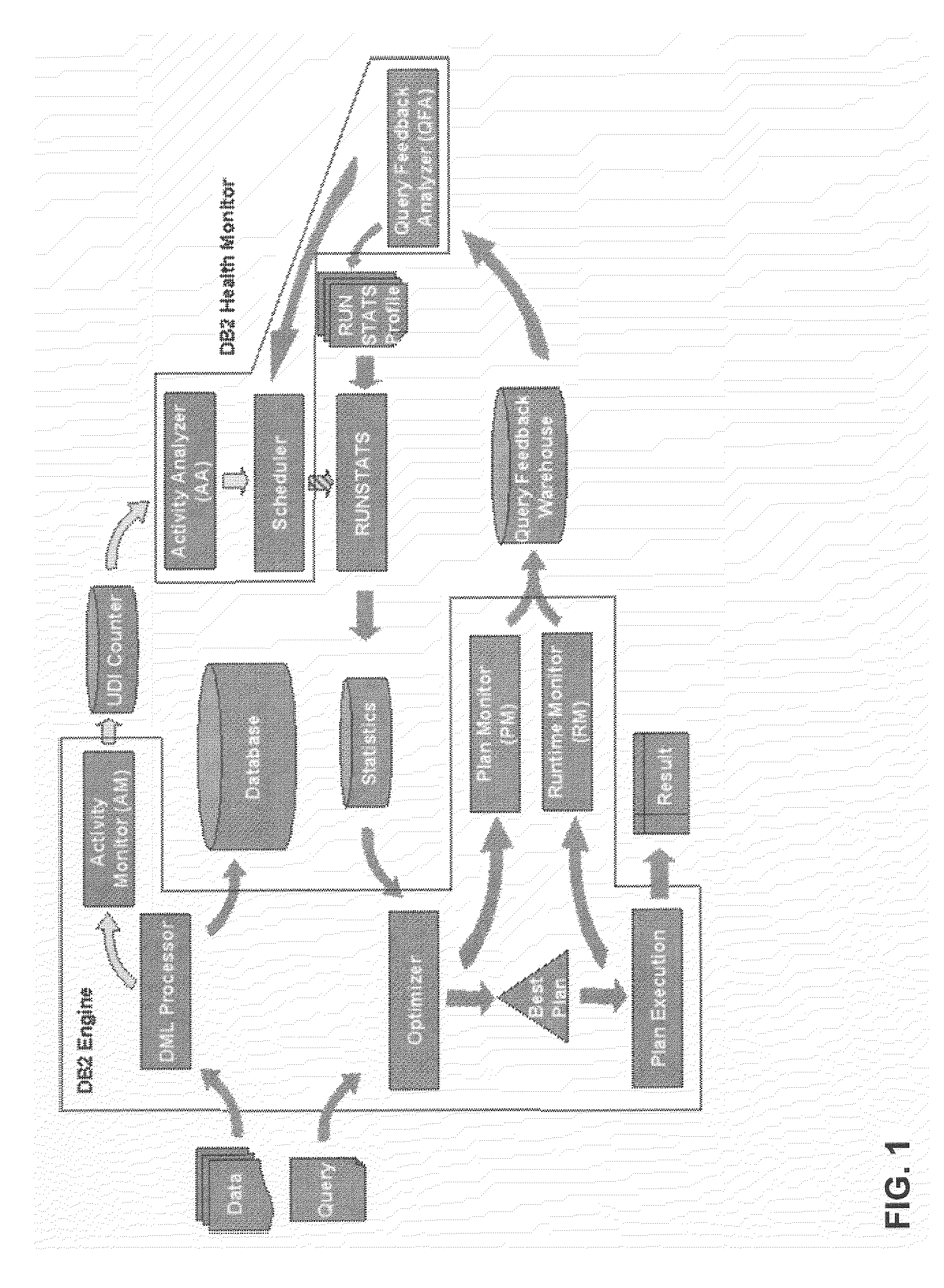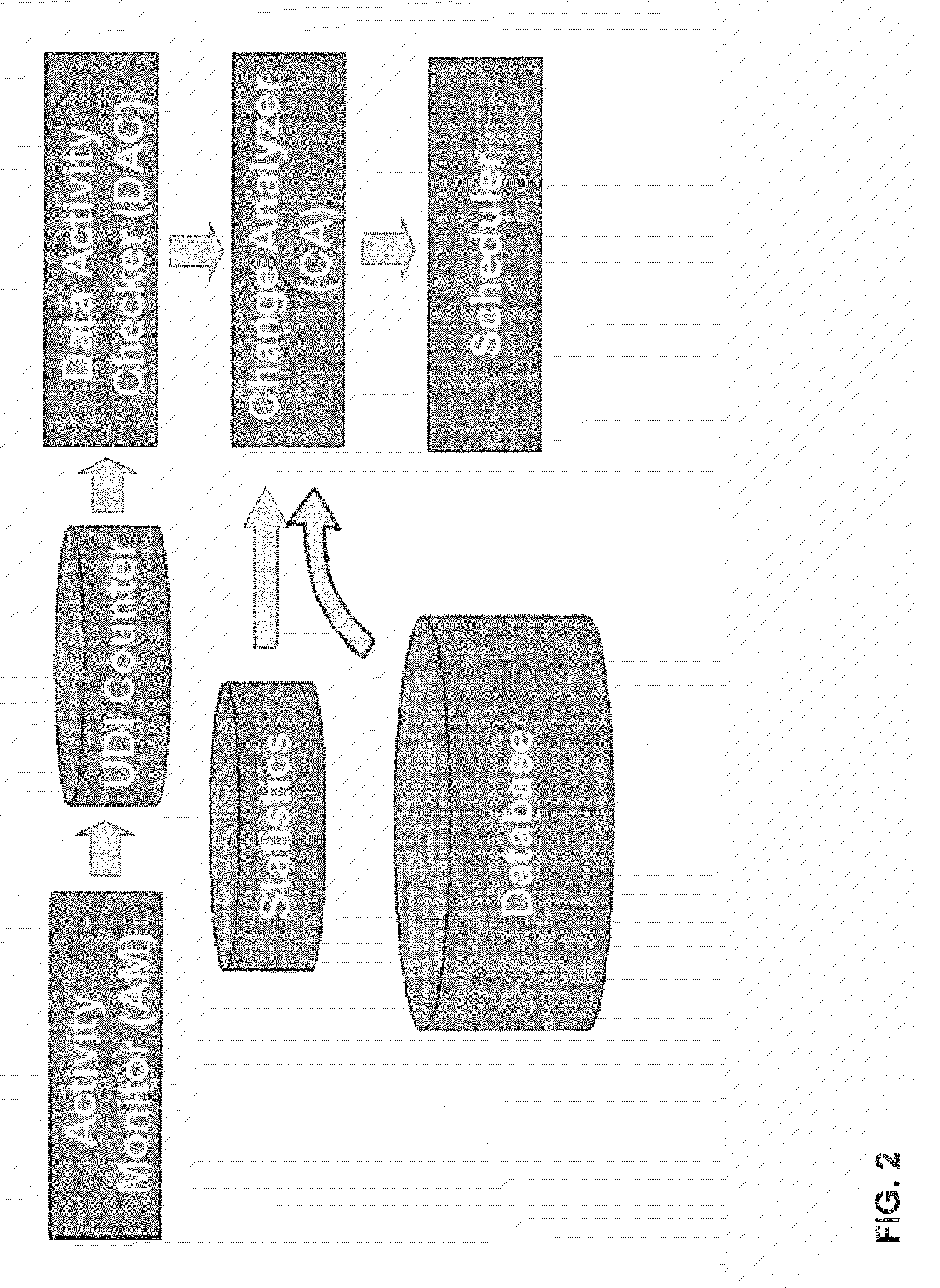System and method for updating database statistics according to query feedback
a database and query feedback technology, applied in the field of database query optimization, can solve the problems of limited size of feedback warehouse and computationally expensive statistics collection
- Summary
- Abstract
- Description
- Claims
- Application Information
AI Technical Summary
Benefits of technology
Problems solved by technology
Method used
Image
Examples
case 1 (
[0095perfect information: α1, α2, α12 known):
Given α1, α2, α12, it suffices to verify the independence assumption on the actual information, i.e., to test whether
(α1 / μ)(α2 / μ)=(α12 / μ)
holds to within a threshold
Θ∈(0,1)1-Θ≤α12mα1α2≤1+Θ,=Independence
case 2 (
only α1, α12 known):
Given α1, α12, we distinguish two subcases:
Subcase 2.1 (α1=α12): If α1=α12, there must be a functional dependency between the two predicates p1 and p2. We therefore can conclude that p1 and p2 are correlated without needing to know 2.
Subcase 2.2 (α1≠α12): We replace the missing parameter α2 by its estimate ε2 and associate an unknown error δ2 with the latter quantity. We then check, as before, whether the relation α1α2=α12 holds.
Option 1: For a threshold
Θ∈(0,1)1-Θ≤α12mα1ɛ21+δ2≤1+Θ[0096] independence
Assuming a default value
γ≦1
such that
|δ2|≦γ
and using conservative bounds (i.e., bounds such that large errors are required before we declare the presence of correlation), we get,
1-Θ1+γ≤α12mα1ɛ2≤1+Θ1-γ=independence
Option 2: We can develop a criterion that depends only on the error terms. (In this connection, observe that both
δ1
and
δ12
are known in the current scenario.) Suppose that
ε12
is estimated as
ε1ε2 / m
and that the independence assumption holds. Then
ɛ1ɛ2m≈ɛ1ɛ2μ=α1α2μ...
case 3 (
only α12 known):
Given only α12, we replace the missing α1 and α2 values by their estimates ε1 and ε2 and associate unknown errors δ1 and δ2 with these estimates. We then again check whether the
relation α1α2=α12μ holds.
Option 1: For a threshold
Θ∈(0,1)1-Θ≤α12mɛ11+δ1ɛ21+δ2≤1+Θ
independence
Assuming a default value
γ≦1
such that
|δ1|≦γ
and
δ2|≦γ
and using a conservative approach as before, we get:
1-Θ1+Δmax≤α12α1ɛ2≤1+Θ1+Δmin
independence,
where
Δmin=γ2−2γ
and
Δmax=γ2+2γ
Option 2: As before, use the fact that
δ12≈Δ
under the independence assumption. For some small threshold
Θε(0,1)
and default value
γ≦1
such that
|δ1|≦γ
and
|δ2|≦γ
(1−Θ)Δmin≦δ12≦(1+Θ)Δmax
independence
where
Δmin=γ2−2γ
and
Δmax=γ2+2γ
as above.
Option 3: A final (though somewhat more suspect) approach is to assume that the unknown errors δ1 and δ2 are in fact equal, i.e, δ1=δ2. We then can compute how large the unknown error δ1 would be under the independence assumption. Solving
δ12+2δ1−δ12=0
for δ1, we obtain
δ1=√{square root over (1+δ12)}−1
Note that we...
PUM
 Login to View More
Login to View More Abstract
Description
Claims
Application Information
 Login to View More
Login to View More - R&D
- Intellectual Property
- Life Sciences
- Materials
- Tech Scout
- Unparalleled Data Quality
- Higher Quality Content
- 60% Fewer Hallucinations
Browse by: Latest US Patents, China's latest patents, Technical Efficacy Thesaurus, Application Domain, Technology Topic, Popular Technical Reports.
© 2025 PatSnap. All rights reserved.Legal|Privacy policy|Modern Slavery Act Transparency Statement|Sitemap|About US| Contact US: help@patsnap.com



